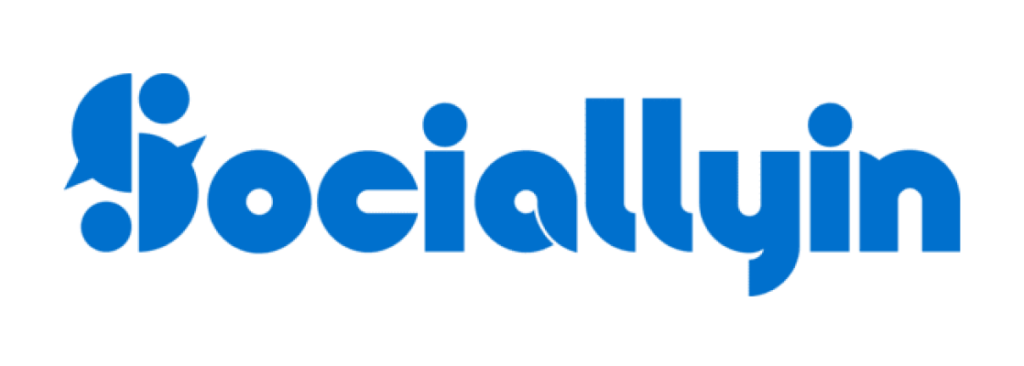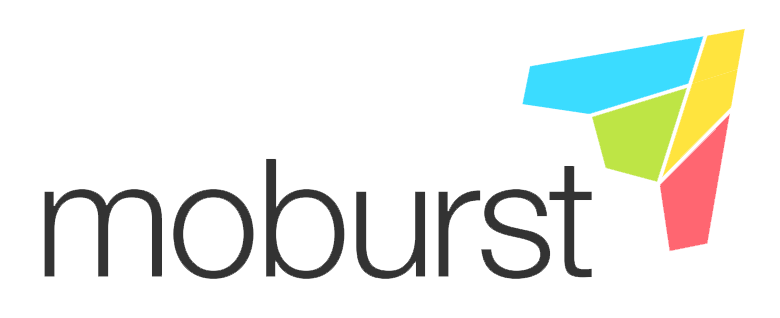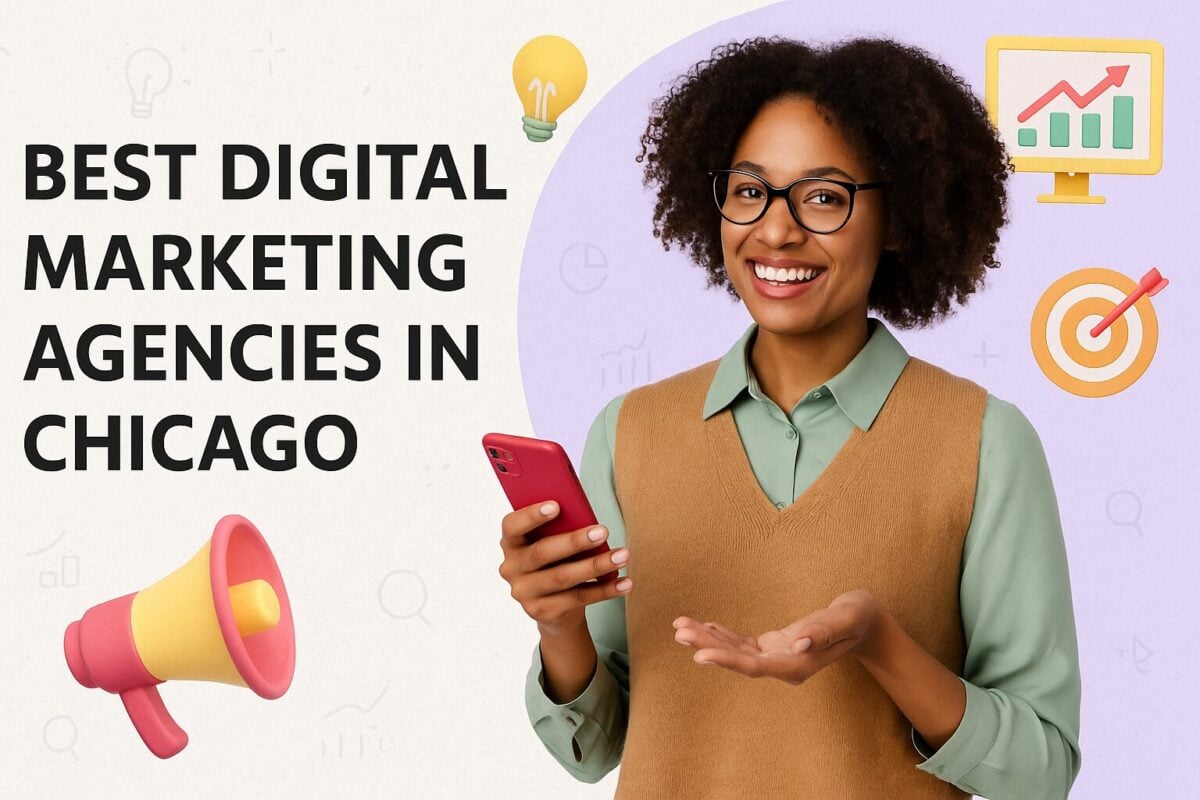Influencer Marketing Hub sets itself apart from conventional review platforms through the involvement of Digital Marketing experts such as Werner Geyser, Djanan Kasumovic, Camille Kennedy, Dave Eagle, and other notable industry figures. This expert team brings a profound understanding of the Digital Marketing landscape, assessing tools and platforms with an insider’s perspective on capabilities, experience, and industry acumen. Unlike user-generated review platforms, Influencer Marketing Hub’s evaluations are rooted in extensive firsthand experience and direct interactions with the tools and platforms in question. This ensures that the reviews are not only trustworthy but also deeply informed. High-caliber brands like Disruptive Advertising, Sociallyin, and SmartSites undergo rigorous monthly evaluations, highlighting the platform’s commitment to identifying and showcasing top-tier solutions in Digital Marketing and beyond.
Influencer Marketing Hub has consistently been recognized by leading media outlets for our authoritative data, findings, and insights within the Digital Marketing landscape. Our platform is frequently cited as a trusted source of information, demonstrating the value and impact of our work in shaping industry standards and practices.
Influencer Marketing Hub employs an expert-driven methodology to evaluate Digital Marketing agencies, ensuring that our recommendations are both reliable and comprehensive. This approach is designed to help businesses and individuals find the best agencies to meet their specific Digital Marketing needs. Here’s how we assess the various agencies like Disruptive Advertising, Sociallyin, and SmartSites:
Sometimes, you can’t wait for organic traffic. Sometimes, you need to get results fast. When that’s the case, it can quite literally pay to invest in pay-per-click (PPC) marketing. As you’ve probably landed on this page because you need quick results, let’s dive right in. Here are 54 of the best PPC agencies from A(udiencly) to Z(eller Media) that can help you to manage your entire PPC campaign from start to finish.
Top PPC Agencies for 2025:
1. Disruptive Advertising

Founded in 2012 and rebranded to Disruptive Advertising a year later, their aim is to create results-based relationships with their clients by helping them to reduce wasted marketing expenditure. Their team of 100+ full-time employees have managed over $100 million in annual spend. With regards to PPC management specifically, their services include paid search, paid social ads, and retargeting.
2. Sociallyin

From community management to content production to paid social advertising, SociallyIn helps brands with virtually all things related to social media marketing. What’s more, they’re one of few social media marketing agencies that solely concentrate on PPC via social platforms.
Key services include:
- Paid media audits
- Analysis and reporting
- A/B testing
3. SmartSites

Founded in 2011 by two brothers, SmartSites is an award-winning digital marketing agency. Their team of certified PPC experts can help you to increase sales while reducing marketing costs with the help of tech, proprietary tools, and data. In fact, according to their website they’re rated as in the top 1% of digital marketing agencies.
Key services include:
- Market segmentation
- Landing pages
- Remarketing
- Display ads
4. Nuanced Media

Nuanced Media is one of the top Amazon marketing agencies, making them a great choice if you specifically need help with Amazon. Their PPC management and optimization services will help you to increase your total sales while lowering your total advertising cost per sale.
Key services include:
- Copy optimization
- Keyword research
- Image/graphic development
- Analysis and strategy
5. Lyfe Marketing

LYFE Marketing is an award-winning social media marketing agency that offers PPC management services to small businesses. As a certified Google partner, they’ve managed more than 250 PPC campaigns. Their monthly PPC ad spend starts from only $500 (excluding a $300 account setup fee).
Key services include:
- Initial campaign strategy
- Ad creation and development
- Ongoing keyword research and optimization
6. NinjaPromo

Founded in 2017, NinjaPromo can help with both paid search and paid social. Their team will help to formulate a custom ads strategy so that your marketing dollars are spent wisely. Once that’s sorted out, they’ll shift their attention to designing creatives to be used in your ads. It doesn’t stop there, though, and ongoing optimization is also included in their service.
Key services include:
- Audience targeting and segmentation
- Detailed reporting and analysis
- Keyword research and selection
7. Audiencly

While Audiencly has been in business for fewer than 5 years, their team has already completed 1,000+ campaigns and can help you to create a strategy for PPC advertising, branded content, and display ads. Brands that they’ve worked with include Wix, NordVPN, and Philips. In addition to paid media, their services also include influencer marketing and social media marketing.
8. Moburst

Growth is the key objective of Moburst for their clients. Using a combination of strategies, including PPC management, Moburst aims to maximize their clients’ budget and improve ROI. They have vast experience in ad networks and real-time bidding for PPC campaigns, delivering high-quality results for clients.
9. Cleverly

Cleverly focuses on generating B2B leads from LinkedIn. They specialize in outreach and sending personalized messages to hundreds of highly targeted audiences, so you get the leads you’ve always dreamed of. If you’re a B2B company, investing in a high-performing LinkedIn marketing agency is a must.
As LinkedIn experts, Cleverly know how to run LinkedIn Ads that convert prospects to customers. Most people find LinkedIn ads complicated and challenging. Marketing to B2B clients is different from the typical social media ads found on Facebook or Instagram. That’s why a team of experts will ensure your LinkedIn Ads pay off.
Key Services:
- LinkedIn Paid Advertising
- LinkedIn Lead Generation
- LinkedIn Content Service
- LinkedIn Recruiting
10. Pearl Lemon

Based in London, Pearl Lemon is an award-winning agency that offers a long list of services. With regards to PPC specifically, their team has over 20 years of combined experience and will create a custom PPC campaign that will help your business to boost its traffic, conversions, and revenue.
Key services include:
- Retargeting for small businesses
- Advanced remarketing
- Content writing
- Lead generation
- SEO
11. Agency Partner Interactive

Based in Dallas, Texas, Agency Partner Interactive is a web design and digital marketing agency. Trusted by high-growth startups and Fortune 500 companies, they offer a wide range of marketing solutions customized for your specific business. To date, their seasoned team of digital marketers have completed more than 1,200 projects.
Key services include:
- AI-enhanced PPC management
- SEO
- Social media marketing
12. Viral Nation

Founded in 2014, Viral Nation has swiftly ascended as a beacon in the performance marketing landscape, heralding a new era of PPC (Pay-Per-Click) advertising. By amalgamating strategic foresight, creativity, and cutting-edge technology, this agency stands as a pioneering force dedicated to augmenting the digital presence of brands in the ever-evolving consumer market.
Key services include:
- Paid media planning
- Content and creative
- PPC campaign execution
13. Lform Design

If you operate in the B2B space specifically, you can check out Lform Design. For more than 15 years, their team has created award-winning web designs. In addition to web design, they can also help with SEO and PPC campaigns.
14. Red Spot Design

Red Spot Design is another web design and digital marketing agency that’s based in Dallas. They’ve worked with a wide range of industries that include retail, non-profit, real estate, and hospitality. With regards to PPC specifically, their services include PPC audits, Google Adwords, Facebook Ads, Bing Ads, display advertising, and retargeting.
15. Magento IT Solutions

Whether you operate in the B2B, B2C, or D2C sector, Magento IT Solutions can help you to scale via any channel including Google, Bing, LinkedIn and YouTube. With regards to their PPC management services specifically, they offer regular reporting, individualized campaigns, ongoing keyword and competitive research, remarketing, and tailored sales plans.
16. UAA

UAA focuses on three services: PPC, SEO, and email marketing. From competitor analysis to keyword research, they can help you with various PPC-related services. For example, for a furniture store in Europe they’ve managed to increase their transactions by 84%.
17. HigherVisibility

Founded more than a decade ago, HigherVisibility has worked with hundreds of small businesses and Fortune 1000s. Their hard work has landed them recognition in publications such as Search Engine Journal, Forbes, and The Huffington Post.
Key services include:
- PPC management
- Website design
- Conversion optimization
- SEO
- Social media
18. Thrive Internet Marketing Agency

Thrive Internet Marketing Agency is one of the best Google Ads agencies and offers an array of services. Boasting more than 15 years of experience, their agency is a reputable leader in PPC management. Their certified Google Ads PPC experts will help you to grow your campaigns so that you can meet your marketing goals.
19. Searchbloom

Searchbloom has been recognized by Clutch as one of the top PPC agencies in 2021. Some of the types of PPC campaigns that they’ve created for clients include search campaigns, display campaigns, feed campaigns, and video campaigns. From research to budget allocation to reporting, their team of PPC management professionals can help you with all the key aspects.
20. WebiMax

WebiMax is an award-winning online reputation management company. In 2021, they were recognized by Clutch as one of the top PR firms. Part of their services also include pay-per-click marketing. Their team of PPC specialists are certified and seasoned in Google Ads, Facebook Ads, and programmatic display.
Key services include:
- Keyword research
- A/B testing
- CRO
- Reporting
21. WebFX

WebFX is one of the largest performance digital marketing agencies in the world and has offices in various locations across North America. One feature that deserves a special mention is that when you work with them you’ll get access to MarketingCloudFX, their top marketing software platform. To date, they’ve managed over 650 PPC campaigns. Their pricing starts at a minimum monthly ad spend of $1,250.
22. WebDesk Solution

WebDesk Solution helps online business owners to meet their goals by means of design, branding, and marketing. Their digital marketing services include local SEO, PPC management, social media marketing, content marketing, and consultation.
23. Ignite Visibility

Located in San Diego, Ignite Visibility is one of the top eCommerce agencies. They’ve been in business for nearly a decade, during which they’ve helped businesses of all sizes. They manage more than $50 million in paid media advertising on various networks and have worked with names like Tony Robbins. What’s more, they’re also consistently named as one of the best PPC companies in the US on all top industry lists.
24. AdVenture Media Group

Founded in 2013, AdVenture has worked with more than 400 clients that include the likes of Forbes Magazine, AMC Networks, and AstraZeneca. They offer various paid search and paid social services that include PPC account audits, Google Shopping, and remarketing campaigns.
25. Bird Marketing

Bird Marketing is an award-winning digital agency that’s based in the UK. Their small, but powerful, team of experts can help you with web design, website hosting, eCommerce, SEO, and PPC. With regards to PPC specifically, their services include keyword research, budgeting, and Google campaigns.
26. Brainlabs

Founded in 2012, the team at Brainlabs can help you with various digital channels. They can help you to create ads across Facebook, Instagram, TikTok, Twitter, Snapchat, Reddit, LinkedIn, and Quora.
Key services include:
- CRO
- SEO
- Paid social
- Paid search
- Programmatic
27. My Biz Niche

On their website, My Biz Niche states that they’re all about rescuing failed internet marketing campaigns. So, whether you need help with Facebook marketing, YouTube marketing, or Instagram marketing, it’s never too late to turn to them. With regards to PPC management specifically, they’ll also make sure that your website is optimized and that your landing pages are relevant for your campaigns.
28. Rocket Clicks

Founded more than 10 years ago, Rocket Clicks is an SEO and PPC agency that’s based in Milwaukee. With regards to PPC specifically, their services include display advertising, social media advertising, mobile advertising, video advertising, and retargeting.
29. Social Media 55

Founded in 2014, Social Media 55 is a digital marketing and social media management agency that has been recognized by the likes of UpCity and Clutch for their efforts. In addition to PPC, they offer a long list of services that include branding, influencer marketing, video production, and mobile app marketing. Some of the brands that they’ve worked with include Century 21, Just Toys Intl., and Arby’s.
30. Zeller Media

In 2015, Zeller Media started to consult on projects. Fast-forward four years and the company expanded their focus to help clients with digital advertising. As a paid search PPC agency, they specialize in search engine marketing on Bing and Google. To help you get the best ROI, they also use top AI automation tools. In 2021 alone, their client spend was more than $12 million.
31. SEOValley

According to Clutch, SEOValley is the most reviewed SEO agency in India. On top of SEO, they also specialize in paid marketing. They use tried-and-tested strategies to ensure your campaign remains cost-effective. With regards to PPC marketing specifically, they can help you with keyword research, competitive analysis, bid management, conversion tracking, and landing pages.
32. UPQODE

UPQODE is a digital marketing and custom web design agency that has over 15 offices across the United States. Since they’ve started in 2016, they’ve already helped more than 300 clients to design beautiful websites and market it effectively.
Key services include:
- PPC
- SEO
- Graphic design
- Email marketing
33. BlueSwitch

If you work specifically with Shopify Plus and want to explore PPC, BlueSwitch is a good agency to check out. They’re one of the oldest Shopify Plus certified agencies and can help with UX design, PPC, and SEO to mention only a few services. Using a 6-step marketing approach, they offer Google search, Google Shopping, remarketing, and display ads services.
34. KlientBoost

KlientBoost has helped hundreds of brands to increase their conversions, while decreasing their cost per conversion. One feature that deserves special mention is that they’ve created their own software (affectionately dubbed Kite) to optimize Google Ads campaigns. Brands that have used their PPC management services include Airbnb and Stanford GSB.
35. Rainmakers

Rainmakers is an award-winning boutique social media agency with 15 years’ experience behind their name. During their time in business, their team has managed millions of dollars in ad spend. In addition to PPC management, they also offer a wide range of other services that include search engine optimization (SEO), UX design, email marketing, and web personalization.
36. Volume Nine

Based in Denver, Volume Nine is a digital marketing agency. Their specialties include PPC, social media, and SEO. As the most effective digital marketing campaigns use various social media platforms and channels, their team often runs Google Ads in addition to other strategies such as content marketing.
Key services include:
- Social media ads
- Display campaigns
- Landing page development
- Retargeting
37. JumpFly

Similarly to Nuanced Media, JumpFly is one of the top agencies to partner with when you need help with Amazon marketing specifically. With nearly 20 years’ experience behind their name, their services include paid search and display as well as paid social media.
38. Maxaudience

MaxAudience is an advertising agency based in San Diego. During the 10 years that they’ve been in business, they’ve helped over 700 clients to generate more than 1 million leads.
Key services include:
- PPC
- Web design
- Social media marketing
- Email marketing
39. Ernst Media

Ernst Media is a boutique digital marketing agency that has been in business for 15+ years.
Based in Washington, their team can help you to get results across generally every PPC channel, including Amazon. In addition to Google Ads, Facebook Ads, and Apple Search Ads, they can also help your brand with SEO, social media marketing, and content strategies. One of the advantages of collaborating with them is that they use a flat, flexible price structure and don’t charge any setup fees.
40. NP Digital

As one of the top eCommerce marketing agencies, NP Digital has helped big brands like Facebook, eBay, and Adobe XD to market their services. With offices across the globe, they offer an impressive range of services that include content marketing, SEO, social media marketing, and paid search. With regards to their paid search services specifically, they can help you with paid social, retargeting, display ads, and Amazon marketing.
41. Directive

Directive is a performance marketing agency that works specifically with SaaS companies. In addition to PPC, they can also help you with SEO, conversion rate optimization (CRO), lead generation, and branding. They’ve helped 200+ leading SaaS companies to generate millions of impressions, get more paid leads, and ultimately spend their dollars more strategically.
42. Stryde

Just like NP Digital, Stryde is one of the top eCommerce marketing agencies. As a boutique firm, they serve quite a niche market (apparel, fashion, home goods, baby/kids, and hospitality industries). Another feature that deserves a special mention is that their team consists mostly of women. This makes them a great choice if your primary target audience is women.
Key services include:
- SEO
- Influencer marketing
- Paid advertising
- Email marketing
- Conversion optimization
43. Loud Mouth Media

Loud Mouth Media is one of the best UK-based social media marketing agencies and has offices in London, Belfast, Dublin, and Glasgow. In fact, they’ve been named the best small PPC agency for two consecutive years and in 2020 as the best eCommerce agency by UK Search Awards.
Key services include:
- Video advertising
- SEO
- Display advertising
44. Cadence SEO

Cadence SEO specializes in technical SEO, competitive research, channel research, and growth strategy. They take a multi-channel approach that includes a wide range of digital marketing services like content marketing, email, and PPC. With regards to PPC marketing specifically, they can help you with Google Adwords, paid social media ads, and display ads.
45. Titan Growth

Similarly to KlientBoost, Titan Growth also uses their own patented tech, TitanBOT, that helps them to predict how search engines will respond. In addition to SEO, they also help businesses to leverage opportunities to reach their target audience via paid media advertising. If you’re not entirely sure about embracing pay per click yet, they offer a free paid media audit and opportunity analysis that you can try out first.
46. Digital Silk

Digital Silk offers a wide range of services and can help brands of all sizes. With offices in multiple cities across the United States, they combine creativity with marketing and tech to generate business growth. Their team of PPC specialists use deep data, research, and strategic content to improve the performance of your paid ad campaigns.
Key services include:
- Customer relationship management systems (CRM)
- Web design and development
- Brand strategy
- Logo design
- App design and development
47. RN01

With the help of their deep understanding of the digital landscape, RNO1 is one of the top performance marketing agencies and can help you to leverage different marketing platforms. In addition to PPC campaigns, they also offer email marketing, social media marketing, and SEO as part of their performance marketing.
48. SocialSEO

SocialSEO features on most of our lists, making them one of the leading eCommerce digital marketing agencies. Unlike their name, their services focus on more than simply SEO. From video production to influencer marketing to pay-per-click services, they can basically help you with all things related to digital marketing to help you scale your online business. Whether you serve the B2C or B2B industry, they can help you with Google Ads, Bing Ads, Amazon Ads, and loads more.
49. PBJ Marketing

PBJ Marketing is a full-service digital marketing agency with offices in New York City and Washington DC. Some of the brands that they’ve worked with include Volkswagen and Yale Medicine. Their team of fully certified PPC experts can help you with mobile ads, display ads, native ads, and video ads.
50. Lounge Lizard

Lounge Lizard has a number of offices across the United States and has worked with businesses in various industries that include the government, hospitality, and automotive sectors. In addition to PPC management, they also offer a wide range of ROI-driven digital marketing services that include social media management, email marketing, and influencer marketing.
51. Black Propeller

Black Propeller is an award-winning, full-service PPC agency that helps their clients to scale their businesses. Each year they manage over $1 million in ad spend. They offer a wide range of PPC advertising services that include paid search, paid social, remarketing, display ads, video advertising, and eCommerce PPC management.
52. Dotlogics

Dotlogics is one of the best web design agencies that can help you to transform your brand. On top of website design, they can also help with digital marketing. With regards to their PPC advertising services specifically, they offer keyword research, Google Ads, Facebook Ads, Instagram Ads, and copywriting.
53. Open Moves

Open Moves has worked with brands like Shutterstock and Purity Products. As Google Premium and Facebook preferred partners, they can help you with paid search and paid social to mention only two of their key services. They also offer a free PPC audit that you can take advantage of.
54. Sagapixel
With two offices in the United States, Sagapixel can assist you with SEO, website design, and PPC management. Their team of experienced PPC managers has helped countless brands to drive leads and sales. With regards to their PPC services specifically, they offer help with landing pages, retargeting, negative keyword lists, and A/B testing.
55. Socially Powerful

Socially Powerful has a number of offices all across the globe. Included in their list of services is paid media. They combine data science with proprietary artificial intelligence to create targeted paid social media. They’ll ensure that the right audience sees your content on social media at the right time. In fact, they’re so confident in their service that if they don’t achieve the KPIs agreed upon, you don’t have to pay them.
Key services include:
- Paid media content strategy
- Content production
- Platform research
Frequently Asked Questions
What is a PPC agency?
A PPC management company or PPC agency will oversee online paid advertising for clients using PPC. PPC stands for pay-per-click, a type of digital advertising where the advertiser will only pay each time one of their ads is clicked.
What does PPC stand for?
PPC stands for pay-per-click, a type of digital advertising where the advertiser will only pay each time one of their ads is clicked. This advertising model means only paying when someone clicks on your ad.
Do you need a PPC agency?
To use PPC properly, you will probably need someone to monitor your campaign for you. Data shows that 72% of companies fail to look at ad campaigns more than once a month. To use PPC properly, you need to monitor it more often.
How does a PPC work?
PPC stands for pay-per-click, a type of digital advertising where the advertiser will only pay each time one of their ads is clicked. You will pay for targeted visits to your website, landing page, or app.


















